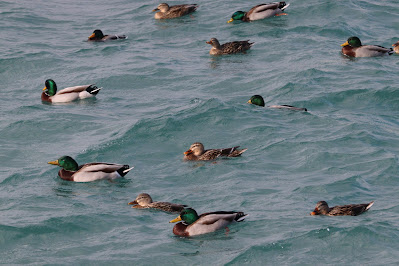A Bit of This and That:
A White-throated Sparrow has chosen to spend the winter in Canatara Park. I have seen it several times, but Deryl was able to photograph it when it popped up and posed for him. White-throated Sparrows tend to stay near the ground, scratching through leaves in search of food. You may see them low in bushes, particularly in spring when they eat fresh buds.
https://www.allaboutbirds.org/guide/White-throated_Sparrow/id
White-breasted Nuthatches get their common name from their habit of jamming large nuts and acorns into tree bark, then whacking them with their sharp bill to "hatch" out the seed from the inside. https://www.allaboutbirds.org/guide/White-breasted_Nuthatch/overview
Many gulls, including these Greater Black-backed Gulls took a break on the ice in Sarnia Bay, when we actually had ice. It is the largest Gull species in the world, weighing up to 4.5 pounds with a wingspan up to 63 inches!
https://www.allaboutbirds.org/guide/Great_Black-backed_Gull/id
More often than not, the Sarnia Bay has been free of ice this winter. Mallards enjoyed the "surfing" conditions on the choppy water one day.






No comments:
Post a Comment